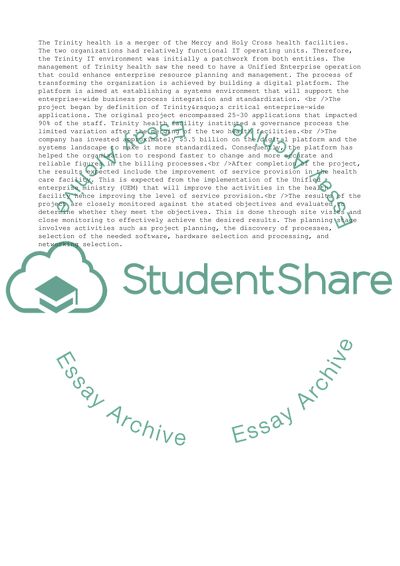Cite this document
(Enterprise Integration Project Plan for Trinity Health Report Example | Topics and Well Written Essays - 2500 words, n.d.)
Enterprise Integration Project Plan for Trinity Health Report Example | Topics and Well Written Essays - 2500 words. https://studentshare.org/business/1842761-final-high-level-plan-for-trinity-health-case-study
Enterprise Integration Project Plan for Trinity Health Report Example | Topics and Well Written Essays - 2500 words. https://studentshare.org/business/1842761-final-high-level-plan-for-trinity-health-case-study
(Enterprise Integration Project Plan for Trinity Health Report Example | Topics and Well Written Essays - 2500 Words)
Enterprise Integration Project Plan for Trinity Health Report Example | Topics and Well Written Essays - 2500 Words. https://studentshare.org/business/1842761-final-high-level-plan-for-trinity-health-case-study.
Enterprise Integration Project Plan for Trinity Health Report Example | Topics and Well Written Essays - 2500 Words. https://studentshare.org/business/1842761-final-high-level-plan-for-trinity-health-case-study.
“Enterprise Integration Project Plan for Trinity Health Report Example | Topics and Well Written Essays - 2500 Words”. https://studentshare.org/business/1842761-final-high-level-plan-for-trinity-health-case-study.


